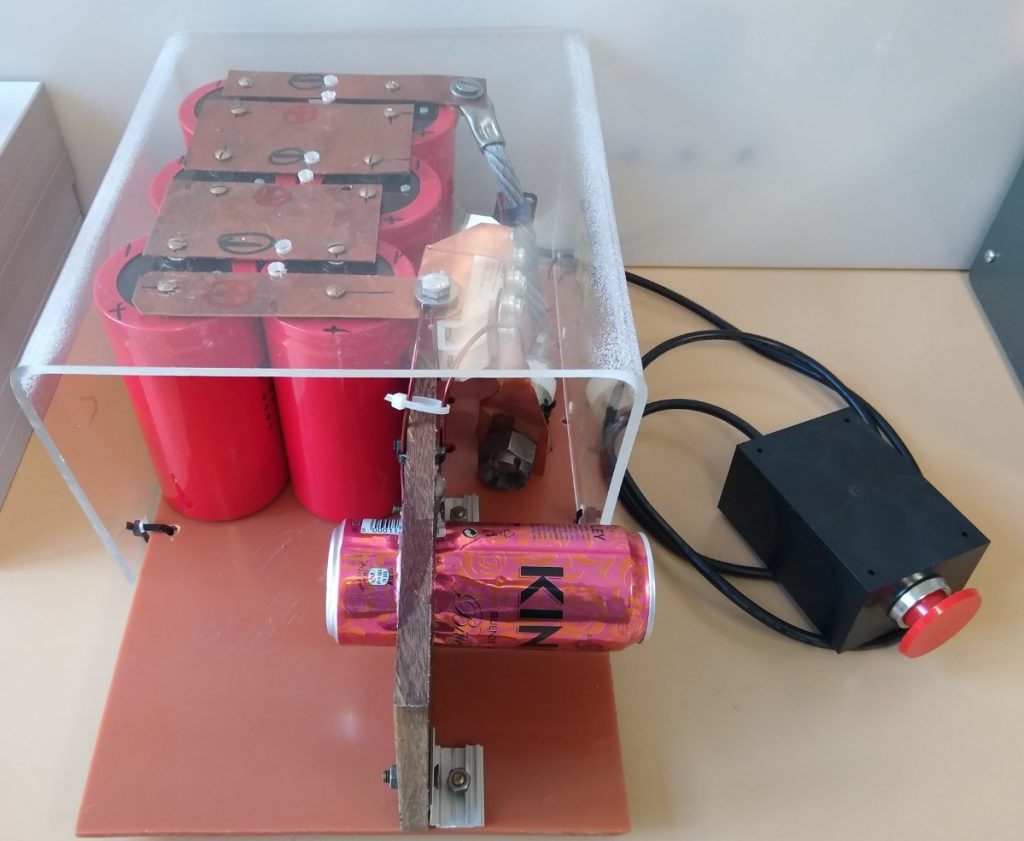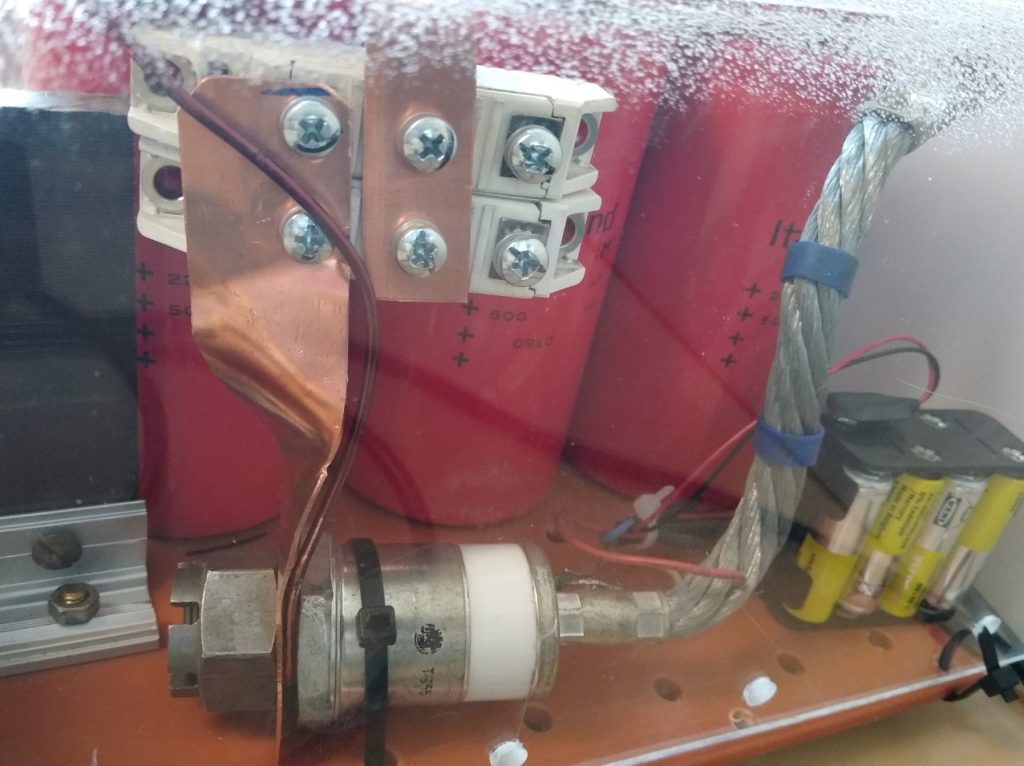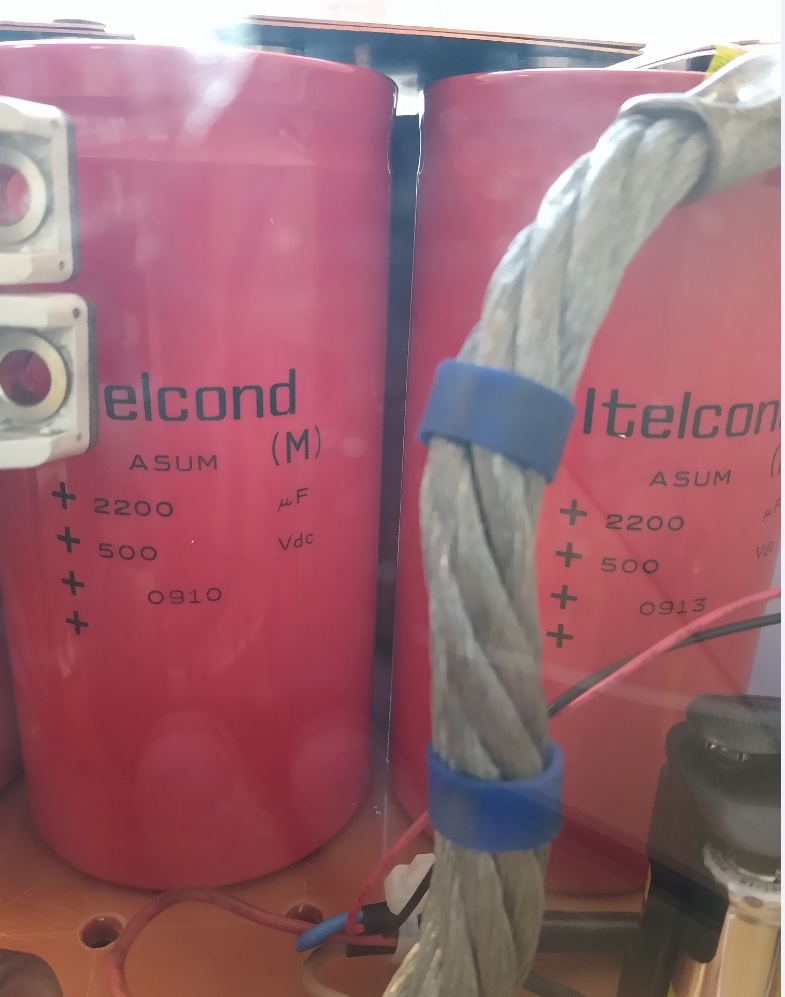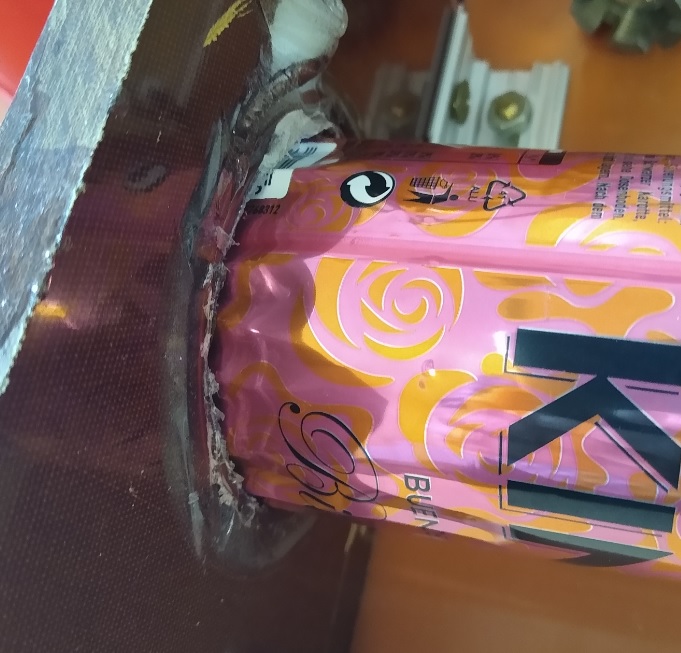ECC is a popular device that nicely demonstrates the laws of physics. We decided to build a small one for the pre-Christmas physics show here at the Faculty of Electrical Engineering, Czech Technical University in Prague Fyzikální čtvrtky | FEL ČVUT .
Warning: The device is extremely dangerous in terms of electric shock hazard. Do not attempt to reproduce the experiment, unless you are a well skilled electrical engineer.
How it works?
1. We need to store some electrical energy into capacitors (6x2m2/500V), capacitor is able to provide back the stored energy very quickly, in μs scale, the important part of the action is finished within let’s say 30μs, giving roughly some 15 MW of power (yes, MEGAwatts).
2. Coil with few turns is connected to the charged capacitors via high power thyristor. High current I1 starts to flow, creating a primary magnetic field B1. The change of magnetic field in time induces current I2 in the closed conductive loop within the aluminum wall of the can, the current flows in a way that the magnetic field B2 opposes B1 by which it was created (Faraday law of electromagnetic induction, Lenz law).
3. Lorentz force starts to act: F = q.(v x B1), v corresponds to I2. It acts on the electrons located in the wall of the can. And therefore it pushes the walls inward…
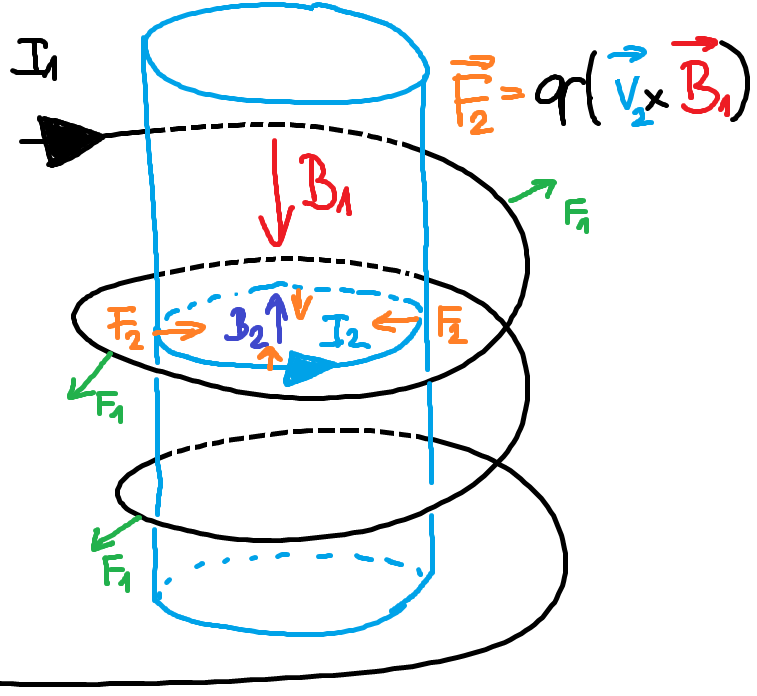
The device is quite small with only a one kilovolt of voltage so the shrinking effect is not so big. We tried to improve it by cooling down the can with liquid nitrogen (-196 degC). That should lower the resistivity of the can to 20% of its original value at room temperature and thus to increase five-times the current I2 and also the Lorentz force. As you can see on the video, it unfortunately somehow does not work that way…
We used very simple (and quite dangerous method) to charge up the capacitors – see the circuit below and the video… Isolation transformer provides galvanic isolation and a bit of safety, autotransformer can provide lower but also a bit higher voltage (250V) than is in the standard power socket (230V). Lightbulbs provide current limiting (discharged capacitor acts like a short-circuit) and finally diode rectifier gives the DC voltage…
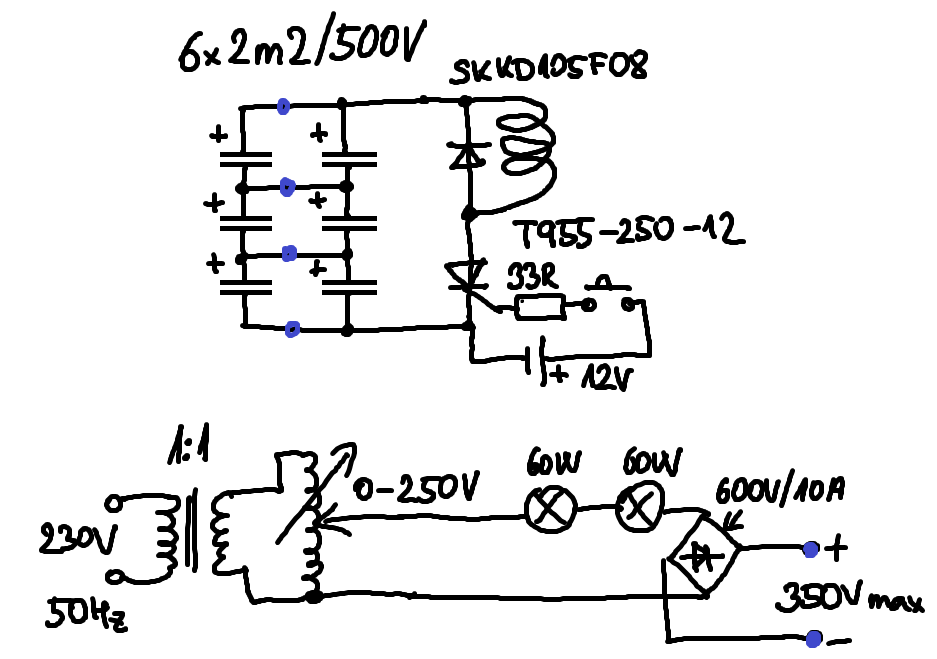
Few pictures of the device
